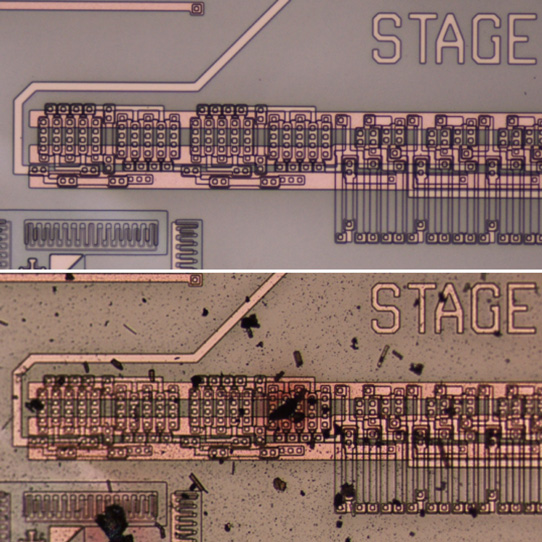- News
10 February 2017
NASA Glenn demos SiC-based ICs operating over 100 times longer under Venus-like temperatures and atmosphere
The Glenn Research Center in Cleveland of US National Aeronautics and Space Administration (NASA) has completed a technology demonstration that could enable new scientific missions to the surface of Venus. The team demonstrated the first prolonged operation of silicon carbide (SiC)-based electronics in the harsh conditions found on Venus ('Prolonged silicon carbide integrated circuit operation in Venus surface atmospheric conditions', AIP Advances 6, 125119 (2016)).
"With further technology development, such electronics could drastically improve Venus lander designs and mission concepts, enabling the first long-duration missions to the surface of Venus," says Phil Neudeck, lead electronics engineer for the project.
Existing Venus landers can only operate on the planet's surface for a few hours due to the extreme atmospheric conditions. The surface temperature on Venus is nearly 860°F, which is hotter than most ovens, and the planet has a high-pressure carbon dioxide atmosphere. Because commercial electronics don't work in this environment, the electronics on past Venus landers have been protected by thermal and pressure-resistant vessels. These vessels only last a few hours, and they add substantial mass and expense to a mission.
To overcome these challenges, the Glenn team developed and implemented extremely durable silicon carbide integrated circuits. They then electrically tested two of these ICs in the Glenn Extreme Environments Rig (GEER), which can precisely simulate the conditions expected on Venus' surface. The ICs withstood the Venus surface temperature and atmospheric conditions for 521 hours – operating more than 100 times longer than previously demonstrated Venus mission electronics.

Picture: IC before (above) and after (below) testing in Venus atmospheric conditions. (Credits: NASA.)
"We demonstrated vastly longer electrical operation with chips directly exposed (no cooling and no protective chip packaging) to a high-fidelity physical and chemical reproduction of Venus' surface atmosphere," says Neudeck. "Both integrated circuits still worked after the end of the test."
Earlier this year, the team demonstrated nearly identical silicon carbide ICs for more than 1000 hours at 900°F in Earth-atmosphere oven testing. The integrated circuits were originally designed to operate in hot regions of fuel-efficient aircraft engines.
"This work not only enables the potential for new science in extended Venus surface and other planetary exploration, but it also has potentially significant impact for a range of Earth-relevant applications, such as in aircraft engines to enable new capabilities, improve operations, and reduce emissions," says Gary Hunter, principle investigator for Venus surface electronics development.
NASA awards Ozark $754,000 to create SiC-based UV imager on a chip
NASA awards Ozark $245,000 in phase 1 SBIR grants to design SiC-based ICs for Venus Rover
http://aip.scitation.org/doi/full/10.1063/1.4973429


